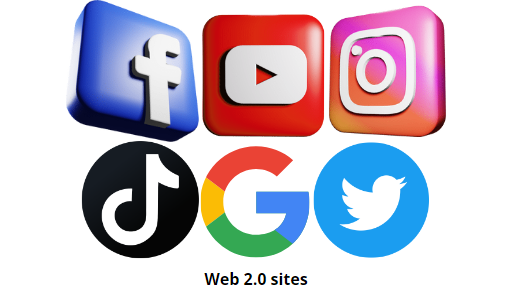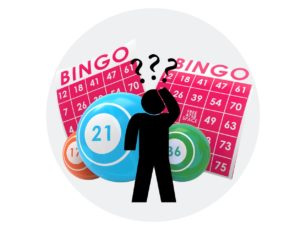Web3 and a Brief History of the Internet
Before anything else, it is probably a good idea to get a grip on what web 3 actually is, especially since it forms a huge part of the current trend of metaverse casinos and all of the interlocking concepts that make it what it is today.
Web3 is supposed to be the next generation of the World Wide Web, which follows the previous Web 2.0 and Web 1.0 before that. To understand what these terms mean, we can use the typical structure of an Internet web page from these eras.
Web 1.0
In the era of Web 1.0, the web pages you find on the Internet are what we call static web pages. In other words, these web pages are only made up of simple text, images, and shapes that are joined together to create a full webpage. If you were old enough to see or even make a webpage for yourself on an old social media platform like MySpace, then you have an idea of what a Web 1.0 web page is.
The key thing to note here is that since web pages in Web 1.0 are static, there is no meaningful and fast way for users to interact with the content provided on the web page.
Web 2.0
As computer hardware and software became more advanced, so too did the World Wide Web, which led to the era of Web 2.0, or as some experts like to refer to it, “the Web as a platform.” Thanks to more advanced web programming languages like Javascript, Ruby, and Python, web pages evolved from simply having static elements to being dynamic platforms in which users could interact with the web page and other users on the web page all in real-time.
This is the web you probably are familiar with today - Facebook, Instagram, Twitter, Youtube, Twitch, Google, Tiktok, Amazon, and just about any website you use today exists in the Web 2.0 paradigm in which users are not only there to consume the content on the web page, but to also produce and share their own content on that what age.

Web 3.0
Now, you may have noticed in that list of companies that all of them, in one way or another, control a significant part of the Internet consciousness with millions of users actively consuming, producing, and sharing content on those platforms every day. According to some internet experts, this became a problem, as the immense influence and control that these companies had on the Internet were quickly intruding into the real, physical lives of their users.
The solution to this was called decentralisation, which was idealised to be a way to give control of the Internet back to the people. While there are many ways of going about this - the most effective of which being legislative controls of these tech giants, the alternative solution that is rapidly gaining popularity is, as you can probably tell, the blockchain.
Going into the everlasting debate of whether or not blockchain technology is actually as beneficial as it purports to be is beyond the scope of this article, but the long and short of it is that Web3 is meant to be a World Wide Web that runs completely on the blockchain, hosted and run not by large multi-billion-dollar corporations but by the collective computing power of the users. Because of the significant contribution of each user to powering this decentralised Internet, Web3 is therefore supposedly able to give users the platform-level control that they wish to have that was not possible with Web 2.0.
What is the Metaverse?
Now that we have all of this context, where does the metaverse come in? The metaverse as envisioned in Web3 is meant to be the location for the new internet's many hub worlds - virtual spaces on the new internet in which people can meet and interact with each other.
However, while the metaverse is a key component of the vision for Web3, it is by no means a concept unique to Web3. In fact, the concept of the metaverse has been around for far longer than you think and believe it or not, you may have already been in a metaverse without even knowing it.

To understand what we mean by this, let us first properly define what the “metaverse” actually is. Simply put, the metaverse refers to a virtual world intended primarily for social interaction. In other words, it is a social media video game in which users are represented as customizable avatars that can interact with other users in various ways depending on the constraints imposed by the game.
Now, reading that back, you might find that that description is somewhat familiar. If it hasn’t quite sparked any old memories, let us rattle off a list of names and see if any of them ring a bell: Roblox; Second Life; Gaia Online; Habbo Hotel; VRChat; Minecraft.
If you have ever played or even just recognize any of those names, then you have already seen a metaverse.
So what is actually new here?
Based on the context of web 3 that we already discussed, most of the new parts of this new meta verse all tie back into the blockchain and by association the concept of cryptocurrency and digital ownership.
The idea of the metaverse in web3 is that the people inside the metaverse are not there simply as consumers of content (as with web 1.0) or producers of content (as with web 2.0) but as owners of content created in, by, and for the metaverse that hold monetary value.
So what does that mean in practice? With cryptocurrency being an integral part of web 3, one can reasonably assume that cryptocurrency, NFTs, and other holders of value in the blockchain are going to be used as the primary medium of exchange when making transactions inside metaverses in web3.

Metaverse Casinos
This now brings us, finally, into the metaverse casino. These casinos, examples of which include Tominoya Casino and ICE Poker that we mentioned at the beginning of this article, are the products of all of the technologies we have discussed so far coming together with the best software, to create full-fledged virtual outlets in which players can interact, gamble, and win.
How to Play at Metaverse Casinos
One of the biggest benefits of metaverse casinos is that, despite all of the marketing and hype around the involvement of cryptocurrency and digital ownership, they are actually quite accessible once you understand (or better yet, ignore) all of those complicated concepts.
When stripped down to the core, all metaverse casinos are just an online real money casino that you already know and love, just wrapped in the packaging of a 3D virtual world that a digital character can move around in. with that in mind the general process of playing at the metaverse casino is actually really simple:
Prepare Cryptocurrency
Now as we mentioned earlier, cryptocurrency is a core component of the transaction systems that are used in metaverse casinos. For this reason, we recommend that you first get cryptocurrency or have experience with playing at a crypto casino, before you join a metaverse casino. To do this, you will need a cryptocurrency wallet to hold the tokens that are used in the metaverse casino and also verify the authenticity of your transactions. MetaMask and Binance are currently two of the most popular options and are already popular amongst Bitcoin casino players.
After that, you can deposit cryptocurrency into your wallet either from coins mined with your computer or by trading your real currency for crypto from a different user on a cryptocurrency exchange. To save you time, we recommend Binance and Coinbase as great places to start.
Set Up a Metaverse Casino Account
Once you have your cryptocurrency, you can now go ahead and register for an account at the metaverse casino of your choice. As of the time of this writing there aren’t many metaverse casinos yet as we did mentioned earlier in this article the largest ones are ICE Poker and Tominoya Casino, both of which are Decentraland metaverse casinos. Of course, as the sector continues to grow and gain the support of both developers and players, new metaverses will inevitably pop up with their own casinos.
Generally speaking, the registration process should not have to ask for your personal information (which itself is a quality inherent to the nature of the blockchain). However, you may be asked to connect your cryptocurrency wallet address and credentials to your casino account to make casino payments easier and process more quickly.
Start Playing!
Once all of that is done, you can then start playing at the metaverse casino just like any other new casino online. Because a lot of it is run on cryptocurrency, you will find that deposits and withdrawals may only be limited to the cryptocurrency token that is offered by the casino itself, which means you will have to go through several hoops to convert that to can back into a fiat currency for you to use in your real life everyday transactions.
Wrap-Up: Is the Metaverse the Future of Gambling?
With everything that we have covered so far, we finally arrive at the million-dollar question: “Is the Metaverse the Future of Gambling?”
The short answer, unsurprisingly, is yes. The fusion and accessibility of the best casino games with the infinite possibilities of commodification and digital ownership, that is made possible with the blockchain and cryptocurrency, creates a lot of fish that can be enjoyed by just about anyone for just about any purpose.
But as with any technology that claims to be the “future,” there will no doubt be some concerns and complications when we ask deeper questions.
For instance, we can probably surmise that metaverse casinos won’t be replacing online or land-based casino gaming any time soon. This is just something that is to be expected when dealing with a new technology, as new adopters may find themselves going back to the old ways when the issues they encounter become too difficult to overcome.
Just one of these potential issues lies in the social interaction aspect. Since the best online casinos in Canada offer players a big catalogue of games you can click on to play, metaverse casinos have players set inside a digital space, moving their character to virtual tables and machines in the casino and interacting with other players over chat or voice. The additional level of interaction, and the controls needed to facilitate them, may make metaverse casinos a bit less accessible to some players.
Even then, there is definitely a ton of potential in space for future expansion, especially as it adopts more novel technologies like virtual reality to provide an additional dimension of interaction in the metaverse’s world of infinite possibilities. Only time will tell as metaverse casinos continue to grow and evolve, and we at Inside Casino will be here and eager to see what comes next.
FAQs
What is exactly the Metaverse?
The metaverse is a 3D virtual world that can be accessed through computers or virtual reality peripherals in which users can control virtual avatars and interact with activities and other users within the space. While originally a concept used in video games, the blockchain has been adopted by cryptocurrency enthusiasts in recent years.
Can I gamble at metaverse casinos in Canada?
Yes, you can gamble at metaverse casinos in Canada as long as you are of legal age and the casino is open to players from Canada. As of the time of publishing this article, there are only a handful of metaverse casinos out there, so your options will be quite limited compared to the online casinos available in Canada.





